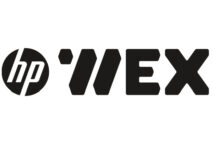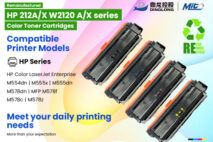There has been big news related to a class-action settlement between HP and numerous inkjet printer owners in the United States related to claims that the OEM misled consumers into believing inkjet cartridges were empty before they were truly depleted, that HP failed to disclose that its inkjets use color ink when printing in black, and that its inkjet cartridges stopped working after reaching an expiration date even although there was still sufficient ink to print.
This particular litigation started out as three separate class-action lawsuits and was consolidated into one suit known as In re: HP Inkjet Printer Litigation. The U.S. District Court for the Northern District of California approved a settlement agreement in March 2011 (see “HP Makes Concessions in Settlement Agreements”), and roughly 122,000 class members filed claims, but the settlement was appealed, grinding the distribution of any benefits to a halt. On May 15, the U.S. Court of Appeals for the Ninth Circuit reversed, vacated, and remanded the district court’s decision to approve the settlement.
What was the problem, you might ask? The huge amount awarded to the class counsel. The settlement agreement In re: HP Inkjet Printer Litigation is a good example of what many people find objectionable about class-action lawsuits in general and the lawyers who pursue these types of suits in particular.
e-Credits Don’t Cost HP a Lot
In addition to the injunctive relief described in our article on the settlement (see “HP Makes Concessions in Settlement Agreements”), the agreement called for HP to issue eligible class members e-credits worth $2 to $6 that were redeemable for printers and printers supplies solely on HP’s e-tail website (www.shopping.hp.com). The credits were to expire six months after being issued.
One could argue—and those opposing the settlement agreement did—that the e-credits actually don’t cost HP much and may even benefit the OEM. HP charges higher prices and makes a bigger profit on products it sells directly versus those sold through other channels. For example, let’s compare just two of the inkjet cartridges used by class members and their prices at HP’s site versus Amazon, which is obviously a big rival to HP’s own shopping site for consumers looking to purchase cartridges online.
Nicklos Ciolino, who brought one of the three class-action complaints, purchased a PSC 2510, which uses some of HP’s most popular integrated inkjet cartridges of a few years back: the HP 56 black and HP 57 tricolor cartridges. On HP’s website, these cartridges sell for $25.99 and $43.99, respectively, with free next-business-day shipping. However, you can purchase the HP 56 and HP 57 from Amazon featured merchants using “Amazon Prime” (a subscription service that offers free two-day shipping, instant video, and other benefits) for $25.50 and $32.50. Not a big difference on the HP 56 black cartridge but a pretty hefty difference on the HP 57 tricolor.
And if you are feeling adventurous and are willing to look beyond featured merchants on Amazon and simply shop for the lowest price on new and supposedly original HP 56 and 57 cartridges, you can get prices as low as $9.90 plus $4.99 in shipping and handling on the HP 56 and $22.99 plus $4.99 in shipping and handling on the HP 57. That’s $11.10 lower than HP’s price for the HP 56 and $16.01 lower than HP’s price on the HP 57 and beats a $2 to $6 e-credit to be sure. And these are by no means isolated examples. The lowest price we could find for a new HP 88XL black ink tank on Amazon was $15.49 ($10.50 plus $4.99 for shipping) versus HP’s price of $44.99—nearly $30 higher.
Now whether by purchasing the lowest-priced product you can find on Amazon from an unfamiliar reseller, you will end up receiving an expired cartridge, a cartridge not in its original packaging, or a counterfeit is another question. Still, it is clear that there are less expensive channels than HP’s retail website. Moreover, the expiration date on the e-credits would limit their use.
The Ninth Circuit made note of such arguments in its decision, saying:
Objectors presented evidence that the same HP “Combo Pack Ink Cartridge” sells for $42.99 on HP.com, while selling for $36.99 on Amazon.com. The $6 price difference is equal to the face value of the e-credits to be awarded to Blennis class members, and is greater than the face value of the e-credits to be awarded to the Rich and Ciolino class members. Thus, with the possible exception of the Blennis class members, Objectors have presented evidence that tends to show that the redemption rate of the e-credits may be very low; presumably Rich and Ciolino class members will prefer to allow their coupons to expire rather than pay a higher price solely to gain the satisfaction of using their coupons.
Insert Your Favorite Lawyer Joke Here
But the fairness of receiving e-credits as compensation was not the issue being appealed. It was the class counsels’ compensation in relation to the value of the settlement to consumers.
The plaintiffs’ attorneys originally submitted bills for over $7 million in fees and expenses, but HP agreed to pay $2.9 million in fees and costs. In the district court’s final settlement order, the court indicated that the e-credits were worth significantly less than their face value and estimated the ultimate value to the class at $1.5 million. As the appeals court puts it, “Recognizing that it would be improper to award fees that outstrip the calculated class benefit, the court ordered HP to pay a reduced lodestar amount of $1.5 million and $596,990.70 in costs.” (The lodestar method calculates attorneys’ fees based on a “reasonable” hourly rate and a “reasonable” number of hours.)
The settlement was appealed on the grounds that it was not fair, reasonable, nor adequate, as required under the C lass Action Fairness Act (CAFA). Objectors claimed that the settlement was “the product of tacit collusion between class counsel and HP,” and that the agreement violated the section of the act relating to how to calculate attorneys’ fees in class-action lawsuits involving a coupon settlement.
The appeals court points out that when a class is paid with coupons and the class counsel is paid in cash, comparing the value of then two is difficult, as “coupon settlement is likely to provide less value to class members if, like here, the coupons are non-transferable, expire soon after their issuance, and cannot be aggregated.”
In the view of the appeals court, one of the goals of CAFA was to discourage coupon settlements and prevent class counsel from “walking away from a case with a windfall, while class members walk away with nothing” by tying the counsels’ compensation to the actual value of the coupon relief.
In their decision, which was not unanimous, the Ninth Circuit reversed the district court’s order granting the settlement. The Ninth Circuit opined that the attorneys’ fees did violate CAFA and that in a settlement providing coupon relief, attorneys’ fees must be calculated using the redemption value of the coupons—that is the value of the coupons that are actually used. The appeals court found that the district court erred when it awarded $1.5 million in attorneys’ fees using the lodestar method, based on its supposition that the “ultimate value” of this settlement was $1.5 million, including both the coupon relief and the value of the injunctive relief.
So now the district court must recalculate the amount of attorneys’ fees and costs to be awarded to the class counsel in light of the Ninth Circuit’s decision. While it seems that the class counsel will get less than the $2.1 million it looked like they would receive a few years back, we suspect that they will still end up the real winners in this litigation.
And so, we will end as you knew we must—with a money-grubbing lawyer joke.
Q: How many lawyers does it take to screw in a light bulb?
A: How many can you afford?
We welcome your comments and your lawyer jokes below. Keep them clean, gentle readers!







1 Comment
I agree with one attorney, who said that HP appeared “to make money on the coupons, because they would receive full retail price (minus a few dollars) for things like paper and ink cartridges instead of (the) wholesale price if consumers purchased the goods (often at lower prices) at Staples or Amazon.”
If enough people are so unaware as to actually use the coupons, HP can actually realize a net profit from losing this lawsuit, the coupon-users will lose money, and of course, the lawyers always “win,” whether they win or lose the case.